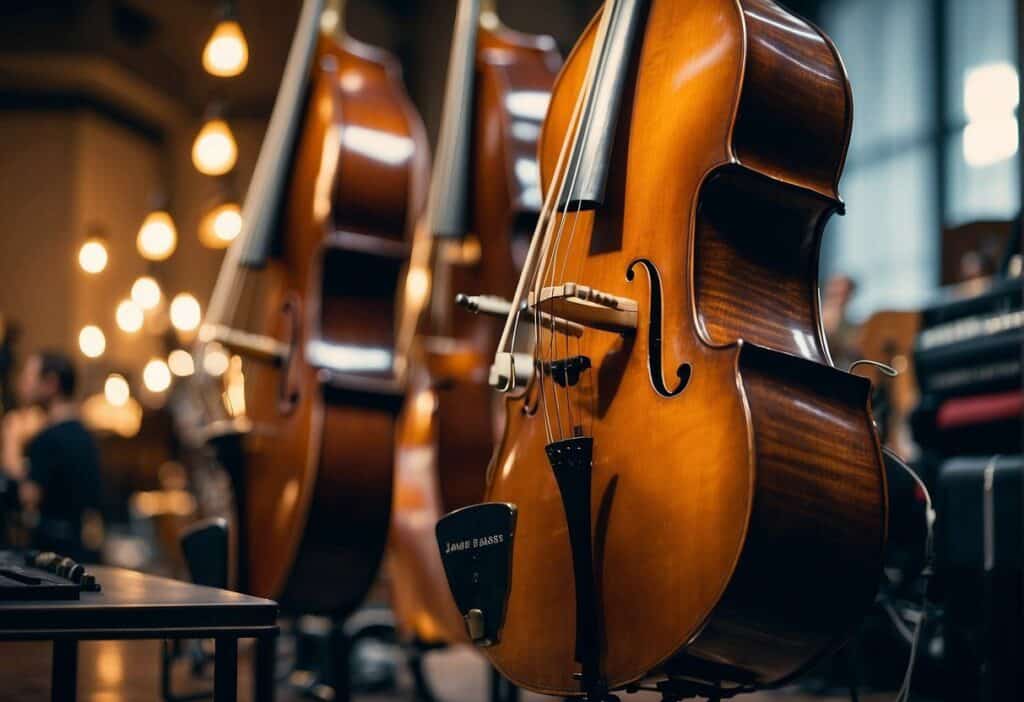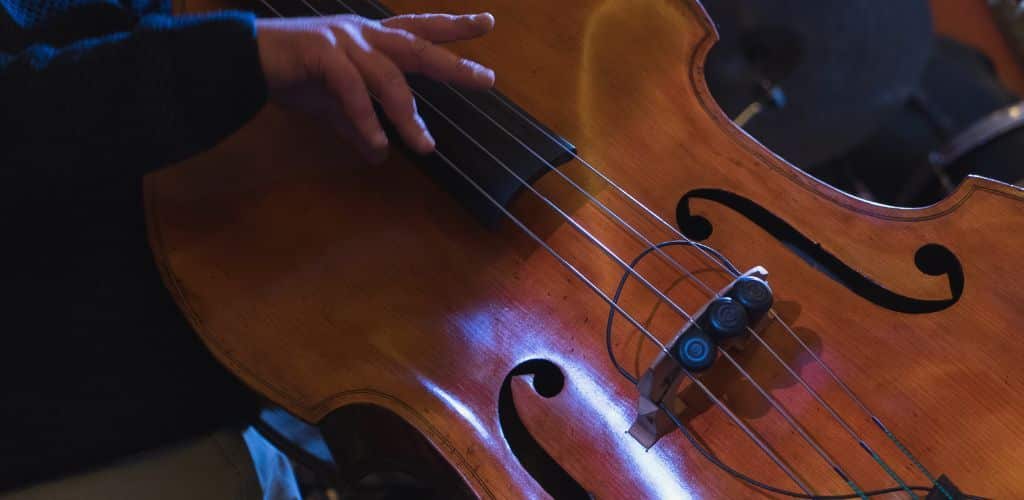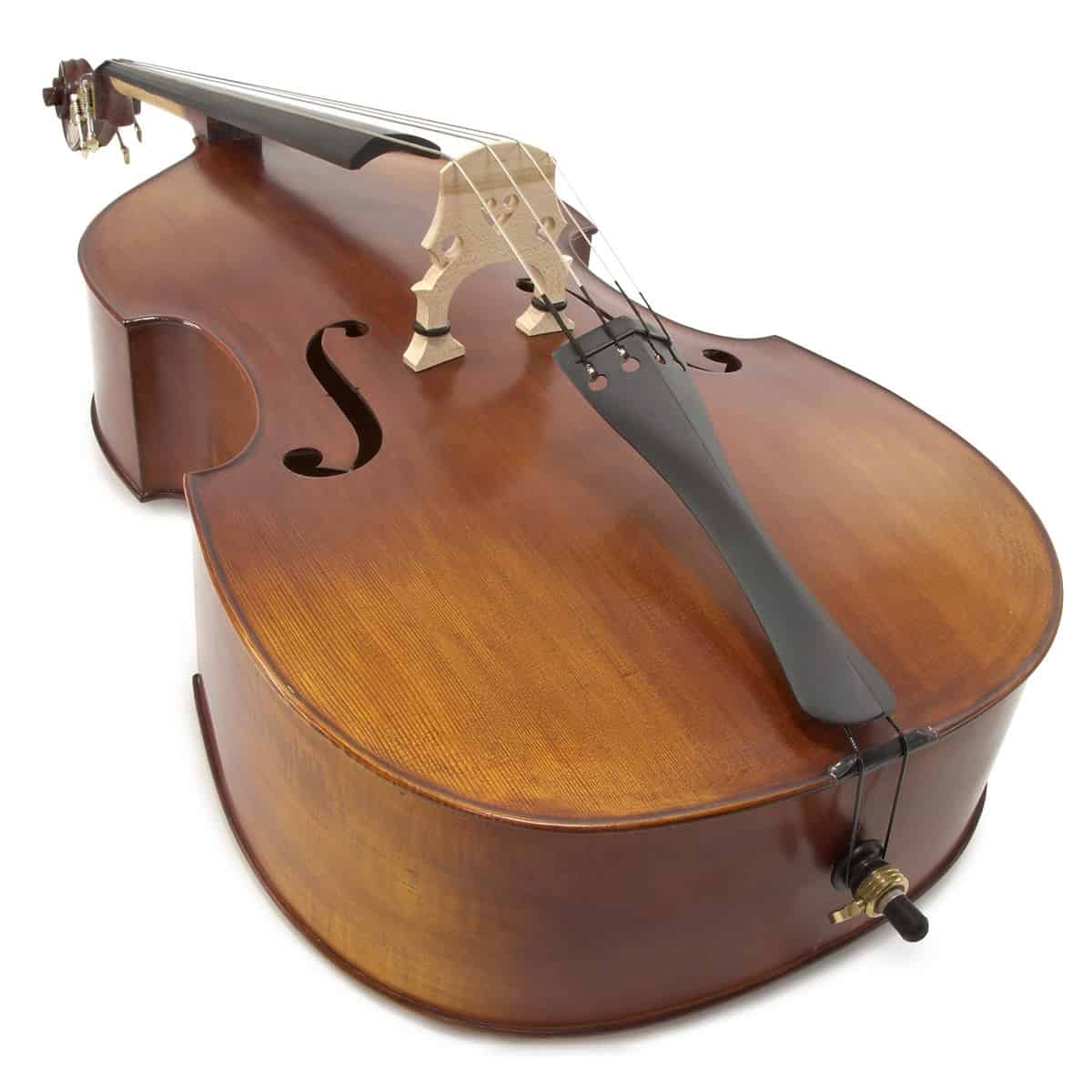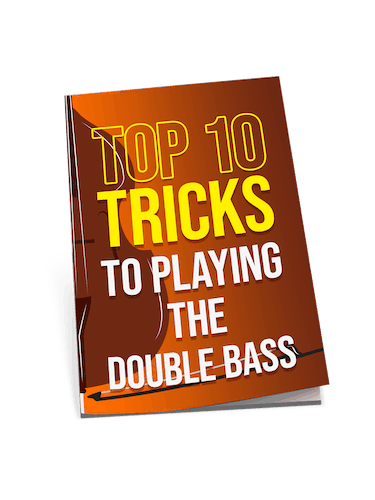Best
AFFORDABLE
DOUBLE BASS
-
Overall: Quality Canadian Spruce & Maple Body
-
Best Feature: Triple Hand Lacquered & Varnished Orange-Brown Finish
-
TedScore™: 8.3/10
Best
OVERALL
DOUBLE BASS
-
Overall: Canadian Spruce & Maple
-
Best Feature: Plucked tone is warm and well balanced
-
TedScore™: 8.8/10
Best
BEGINNER
DOUBLE BASS
-
Overall: Includes Solid Spruce Top, Solid Flamed Maple Back & Sides
-
Best Feature: Comes with bow and cover
-
TedScore™: 7/10
Can double bass be played pizzicato? Definitely! It’s an excellent way to make those deep, resonant strings sound amazing!
Playing the double bass by plucking the strings with your fingers instead of using a bow creates a different sound, similar to changing from a paintbrush to a piece of charcoal—it’s the same instrument but with a different vibe.
Using the pizzicato technique could make you stand out as a double bass player.

It’s not just about playing a note; it’s about making that note come alive, adding different feelings to music, whether big, powerful orchestral music or a jazz band’s smooth, relaxed sounds.
Let’s explore the fun world of playing the double bass with your fingers. There’s a lot to discover, from the bouncy rhythm of jazz music to the gentle touches needed for classical songs.
Keep reading, and let’s figure out these mysteries together—your fingers will be happy you did!
Fundamentals of Pizzicato on Double Bass
When you start learning about the double bass, you’ll find that playing pizzicato isn’t just about plucking strings—it’s an art form. Musicians can create many musical feelings using different techniques and tiny details.
Understanding Pizzicato

The double bass sings not only with the bow but also with the fingers. Pizzicato, or plucking the strings, offers a percussive yet melodic facet to the bassist’s palette.
It requires the player to use their right hand to pluck the strings directly, creating a sound distinct from bowing (arco).
Double Bass Pizzicato Techniques

From classical to jazz, pizzicato techniques on the double bass vary in timbre and approach.
Classical pizzicato focuses on a clean tone, often avoiding undesired fingerboard buzz.
In contrast, jazz pizzicato embraces a variety of sounds, including that fingerboard growl, to add a rhythmic punch that complements jazz’s swing and groove.
Right-Hand Pizzicato Fundamentals

The double bassist’s right hand is the key to unlocking the pizzicato’s charm. Whether one employs a French bow grip or a German bow grip can influence their right-hand position during pizzicato.
For instance, a French bow hold often translates to a similarly curved hand for plucking, while German bow users might adopt a more open and flatter hand position.
Musical Contexts and Styles
The double bass has a versatile sound that can fit into different styles, especially when playing pizzicato, where the player plucks the strings.
Whether it’s the delicate touches in classical music or the rhythmic beats in jazz, pizzicato adds a unique feel to each type of music.
Pizzicato in Classical Music

In classical music, composers like Mozart and Beethoven often employed orchestral pizzicato to add texture and punctuate rhythms.
The viol family, which includes the cello and viola da gamba, shares this technique, but the double bass can deliver a unique heft to the lower register.
For instance, Strauss may use pizzicato on the double bass to emphasize regal moments in an orchestral piece.
Pizzicato in Jazz

Jazz double bassists often employ various techniques to produce rich and expressive sounds. When using the bass bow, they use both the index and middle finger to guide the bow across the strings, creating a smooth and resonant tone.
In contrast, when playing pizzicato, they pluck the strings with their index finger, causing the vibrating string to produce the desired notes.
These techniques are essential for bringing out the nuanced and dynamic qualities of the double basses, allowing players to master the intricate and diverse double bass parts found in jazz music.
Getting Started with Top Brands
Archer Size Professional Double Bass
The Archer Size Professional Double Bass features a hand-carved spruce top and maple back and sides, delivering a rich, resonant tone with excellent projection.
Its adjustable bridge and durable ebony fingerboard provide superior playability and customization, making it an excellent choice for professional bassists seeking quality and versatility.
Archer Size Professional Double Bass

COMES WITH: Bow & Hard Case
FEATURES: Canadian Spruce & Maple
Archer Size Professional Double Bass
- Plucked tone is warm and well balanced
- None
When you click ‘Check Price’, you’ll see there are loads of great places to buy this item. Our personal favorite is Sweetwater for the US, and Thomann and Gear4Music for the UK & Europe.
They are the largest music retailers, with excellent customer service, competitive prices, really fast shipping, and the longest guarantees.
The professional musician who wrote this article combined many things,
from the product build, manufacturer’s reputation through to feedback
from other users, to create our famous TedScore™.
Stentor Conservatoire
The Stentor Conservatoire Double Bass features a solid carved spruce top and maple back and sides, offering a warm, resonant tone ideal for advanced students and professional players.
Its ebony fingerboard and adjustable bridge ensure precise playability and durability, making it a reliable choice for orchestral and solo performances.
Stentor Conservatoire

COMES WITH: Bow & cover
FEATURES: Includes Solid Spruce Top, Solid Flamed Maple Back & Sides
Stentor Conservatoire
- Excellent price for a fully-carved double bass
- Great sound
- Reliable and consistent brand
- Comes with bow and cover
- Handcrafted for a unique finish
- Would benefit from a professional set-up and new strings to maximise its sound quality
- Less attractive to look at than other fully-carved basses
When you click ‘Check Price’, you’ll see there are loads of great places to buy this item. Our personal favorite is Sweetwater for the US, and Thomann and Gear4Music for the UK & Europe.
They are the largest music retailers, with excellent customer service, competitive prices, really fast shipping, and the longest guarantees.
The professional musician who wrote this article combined many things,
from the product build, manufacturer’s reputation through to feedback
from other users, to create our famous TedScore™.
Deluxe Solid Top Bass
The Deluxe Solid Top Bass features a hand-carved solid spruce top and maple back and sides, providing a rich, full-bodied tone with excellent resonance.
Its high-quality ebony fingerboard and adjustable bridge offer superior playability and customization, making it an ideal choice for serious bassists seeking both performance and durability.
Deluxe Solid Top Bass

COMES WITH: Bow & Hard Case
FEATURES: Quality Canadian Spruce & Maple Body
Deluxe Solid Top Bass
- 2-year warranty & 30-day money-back guarantee
- Triple Hand Lacquered & Varnished Orange-Brown Finish
- None
When you click ‘Check Price’, you’ll see there are loads of great places to buy this item. Our personal favorite is Sweetwater for the US, and Thomann and Gear4Music for the UK & Europe.
They are the largest music retailers, with excellent customer service, competitive prices, really fast shipping, and the longest guarantees.
The professional musician who wrote this article combined many things,
from the product build, manufacturer’s reputation through to feedback
from other users, to create our famous TedScore™.
Can double bass be played pizzicato:
Summary

The double bass flaunts its versatility, not just with the bow but through the magic of pizzicato. This technique allows the bassist to pluck away soulful melodies and rhythmic lines with the tips of their fingers.
Here’s a short breakdown:
Classical vs. Jazz Pizzicato: Classical seeks purity of tone, while jazz embraces richer, earthier sounds.
Technique Mastery: A quintessential aspect of versatile double bass playing, whether bowing or plucking.
Expressive Diversity: Pizzicato offers a spectrum of emotional expressiveness, from sizzling staccatos to tender legatos.
Double bass players fear not the realm of pizzicato, for it offers a blossoming garden of sonic experiences. Grab those strings, and let the music flow!
Keep reading, there’s more…
Check out this informative guide to find the best double bass for beginners.
FAQ's
Pizzicato, a technique involving plucking the strings with the fingers, is commonly used on string instruments such as the violin, viola, cello, and double bass.
Yes, the double bass can be plucked using a pizzicato, which is when the player uses their fingers to pluck the strings instead of a bow.
The double bass is a versatile instrument used in various music styles, including classical, jazz, blues, rock, folk, and more. It provides a foundational and rhythmic element in orchestras, jazz ensembles, and other musical settings.
The double bass can play many notes across its four strings, covering a vast tonal range from low E to high C. Its deep, resonant sound contributes to the instrument’s versatility in different musical genres.











While I appreciate the attempt to cover pizzicato in classical music, I believe the article could have gone deeper into the historical aspects and its evolution. For example, the influence of Baroque techniques on modern playing styles was notably absent. However, it’s a good starting point for newcomers.
You’re absolutely right. The transition from the Baroque period’s usage of pizzicato to its adoption and transformation in the classical era is a fascinating topic that merits its own discussion. The technique’s refinement over the centuries reflects broader shifts in musical tastes and performance practices.
Imagine slapping the bass like it owes you money, that’s my pizzicato technique lol
Superb exploration of pizzicato across different musical genres. I’ve been a jazz bassist for over 15 years, and the subtle nuances in pizzicato technique that you highlighted between classical and jazz music are spot on. In jazz, the improvisational aspect demands a greater versatility in pizzicato performance, which I believe you captured beautifully here. It’s refreshing to see such attention paid to the foundational techniques that can often be overlooked.
Thanks, JazzCatLinda! As someone just getting into jazz bass, this insight is golden. Keeping these differences in mind as I practice.
Hey Gemma , thanks for the solid intro to pizzicato techniques on the double bass. I’ve been playing for a few months and still figuring out how to get that crisp sound without buzzing. Any tips on how to improve finger strength or maybe it’s the angle I’m plucking at? Also, do you think certain brands of double bass are better suited for pizzicato or it’s all in the technique?